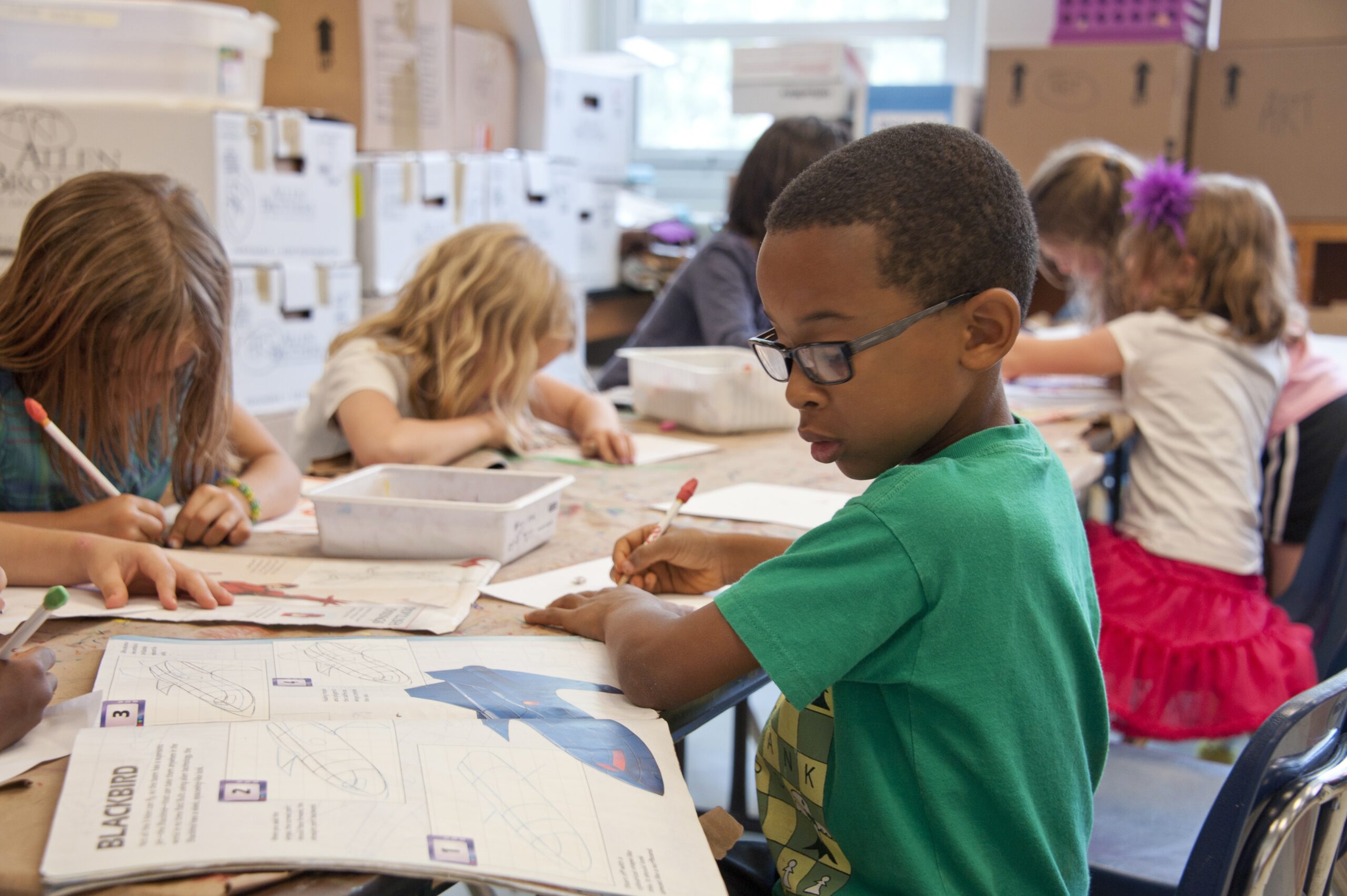News & Announcements
Project CLEAR (California Literacy Elevation by Accelerating Reading)
Project CLEAR is a Learning Acceleration System grantee funded through the CCEE to build capacity within districts across California to implement and support literacy development. These evidence-based approaches to accelerated learning enable students to make strong and rapid progress in reading and writing.
Project CLEAR is looking for schools, districts, and educators interested in benefiting from this grant-funded professional learning opportunity to launch a new cohort of Teacher Leaders in January! Through this two-year program, participants will become Teacher Leaders who can train and coach teachers to implement comprehensive literacy strategies in schools and K-12 interventions for students who have reading, writing, and language-based needs. These Teacher Leaders can expand availability and access to literacy acceleration, prevention, and intervention for diverse students in their district or school, including students who are English learners, students in dual language programs, and students with disabilities, including those with dyslexia and/or phonological processing issues. Learn more on Project CLEAR’s website.
Resumen de Proyecto CLEAR (Spanish/Español )
The 21st Century California School Leadership Academy (21CSLA)
21CSLA provides high quality, equity-centered professional learning for educational leaders of schools and districts in California that receive Title II funds. Programs are no-cost to participants and include leadership coaching, as well as an emphasis on improving instruction and achievement outcomes (including through distance learning) for English Learners, students with disabilities, low income students, and other historically marginalized students.
Looking Ahead
California Dyslexia Initiative Expert Webinar Series
Do you want to better understand how to support struggling readers and students with dyslexia in your school?
Join Sacramento COE and Glean Education to earn more about identifying risk factors, setting up effective MTSS/RTI school systems to prevent reading difficulties, and delivering research-based instruction to support and remediate struggling learners and students with dyslexia.
Independent Study Professional Learning Network (ISPLN)
CCEE facilitates monthly sessions where Independent Study Professional Learning Network (ISPLN) participants learn strategies, structures, practices, policies, and procedures that districts have adopted to effectively engage their local communities in support of improving student outcomes. Our next meeting on February 6th will cover assigning quality and rigorous coursework in Independent Study. Please contact Gonzalo Avila at [email protected] for more information.
- Register for our next meeting on February 6, 2023.
California Collaborative for Learning Acceleration
Through the California Collaborative for Learning Acceleration (CCLA), one of three CCEE Learning Acceleration System grantees, the SCCOE and its partners are building an evidence-based professional learning model for educators that can support learning acceleration, particularly in mathematics, literacy, and language development. Accelerated learning strategies are those designated to meet pupils where they are in their learning which will enable them to make strong rapid progress in their mastery of knowledge and skills. These strategies may include individual or small group tutoring or whole class instruction using well-grounded methods with scaffolds and differentiation that meet pupils’ specific needs. This year, CCLA aims to put asynchronous content and resources in the hands of educators across the state, as well as offer opportunities to work in-person in schools and/or districts. Coming soon in January 2023, FREE asynchronous courses for learning acceleration in targeted math, literacy and language development areas that infuse critical elements of Universal Design for Learning, Culturally Sustaining Pedagogy, and Social-Emotional Learning will be available to all educators.
In Case You Missed It
System of Support Updates (November 2022)
November Resources
November – Native American Heritage Month
November 8 – National STEM/STEAM Day
November 12-20 – National Hunger & Homeless Awareness Week
November 13 – World Kindness Day
November 16 – International Day for Tolerance
Executive Director’s Corner
Why Continuous Improvement is so Vital for School Transformation
By Matt J. Navo, Executive Director, CCEE

Educators use many acronyms to describe their work. The field of acronyms is long and at times educators can seemingly sound like they are speaking another language to those not so familiar. However, when it comes to Continuous Improvement (CI), this is one “buzzword” that everyone needs to understand.
CI is the basic act of “getting better at getting better” with whatever endeavor you are trying to improve. It is about looking at results compared to what you hoped to achieve, reflecting on those results, and making adjustments. The act of CI leads to school transformation because it puts those closest to the work impacting the direction. When you have those closest to the work doing the work of CI, the chances of improved outcomes and school transformation greatly improve.
This newsletter put together by our Teaching, Learning, and Leading Center (TLLC) will share the importance of CI when it comes to improving outcomes for students and transforming schools.
The Art of Practicing Gratitude within Continuous Improvement
By Dr. Stephanie Gregson, Deputy Executive Director of the Teaching, Learning, and Leading Center

As our Executive Director pointed out in his article, the foundation of continuous improvement is the act of “getting better at getting better,” and for schools, this is directly related to school transformation and compassionate systems change. One element I would like to remind us all of is how we are practicing gratitude within the continuous improvement work. We know from our learned and lived experiences that school transformation happens when those closest to the work are engaging in the act of continuous improvement, but how often are we practicing gratitude for all our colleagues engaged in this work? How does practicing gratitude positively impact our work?
The research on gratitude spans over centuries, and even the definition of gratitude has morphed over time based on the research. Gratitude is a multilayered concept but is a fundamental attribute of human beings and a potential key to human flourishing. As we participate in authentic continuous improvement, practicing gratitude with each other contributes to the shaping of our collective being and helps us all get better (Emmons & McCullough, 2004).
Reflecting on your actions, behaviors, decisions, and presence within the work is not easy, in fact, it is exhausting. However, it is the work we all need to engage in if we are to truly approach school transformation in a compassionate way.
I would like to share our gratitude and appreciation for colleagues across the state serving students who are looking within themselves, reflecting on their actions, behaviors, and presence to be able to show up as their most authentic selves for students. When we, as adults, model gratitude and compassion, our students benefit from an environment that helps them thrive, to be their best selves.
As you engage in the act of continuous improvement, take the opportunity to also practice gratitude by acknowledging the hard work you and your team are participating in on behalf of yourself and our students.
References:
Emmons, Robert A., and Michael E. McCullough, eds. The psychology of gratitude. Oxford University Press, 2004.
The What and Whys of CI
By Dr. Jennie Wright, Senior Manager of the Teaching, Learning, and Leading Center

Continuous improvement (CI) has been around for a while and is an ingrained practice in fields such as healthcare, manufacturing, and technology (Best & Dunlap, 2014). It is a relatively new approach in the field of education. The term continuous improvement has been building steam in education circles over the last decade, however the robust implementation of improvement practices across the field has lagged (Park, et.al., 2013). Continuous improvement is a process that uses quantitative and qualitative evidence through disciplined inquiry to improve systems’ efficacy and outcomes for the end user, in the case of the field of education, that is students.
While continuous improvement continues to be a buzz word across the field of education, it’s important to highlight why that is and why engaging in continuous improvement is an integral practice. Improvement has long been a goal for educators and the focus of those conversations is largely focused on improving the end product, student outcomes. However, how we achieve those outcomes and the collective work done to improve the system for long-term success is equally as important. Continuous improvement provides a process that breaks down improvement into smaller, more manageable pieces as we deconstruct the system and consider change ideas in shorter, smaller increments. On the heels of a global pandemic, and mounting evidence of an even greater need for improvement, now is the time to adopt continuous improvement practices that provide educators with a framework and roadmap for providing better learning experiences and outcomes for the students across the system.
References:
Park, S., Hironaka, S., Carver, P., & Nordstrum, L. (2013). Continuous improvement in education. Carnegie Foundation for the Advancement of Teaching. https://www.carnegiefoundation.org/wp-content/uploads/2014/09/carnegie-foundation_continuous-improvement_2013.05.pdf.
Best, J. and Dunlap, A. (2014). Continuous improvement in schools and districts: Policy considerations. McRel International. https://files.eric.ed.gov/fulltext/ED557599.pdf.
Using Continuous Improvement Cycles to Support Coherence
By Dr. Susan Tandberg, CCEE Professional Expert

Coherence is defined by Fullan and Quinn (2016) as the “shared depth of understanding about the purpose and nature of the work” (p 1). The purpose and nature of the work is outlined in the four components or “right drivers”: focusing direction, cultivating collaborative cultures, deepening learning, and securing accountability. In service of these drivers is the work of continuous improvement cycles of inquiry.
“Continuous improvement is a disciplined and ongoing approach to improving processes and systems that produce positive outcomes for students. It provides a structure for educators to identify problems; design interventions specific to those problems; test interventions in context; and evaluate effectiveness before scaling up the intervention.” (Myung, et al. 2020).
Given this definition, we can see how the process of continuous improvement is one tool to support the acquisition of coherence in a system. Both are ongoing processes with a results orientation. Additionally, they are both grounded in the identification of a small number of clear targeted goals and strategies for attainment of those goals. The process for establishing learning goals and gaining agreement on pedagogical practices are grounded in intentional collaborative work resulting in increased collective efficacy. Finally, accountability is secured through the establishment of benchmark progress and relentless reflection on process and results. Achieving coherence in a system requires ongoing implementation and monitoring of the “right drivers.” Using the cycle of continuous improvement is a process for helping schools keep focused on the “right drivers” resulting in increased student outcomes.
References:
Fullan, M., & Quinn, J. (2016). Coherence: The right drivers in action for schools, districts, and systems. Corwin Press, Thousand Oaks, Ca.
Myung, J., Krausen, K., Kimner, H. Donahue, C. (2020). Continuous Improvement in Schools in the Covid-19 Context. Policy Analysis for California Education. https://edpolicyinca.org/publications/continuous-improvement-schools-covid-19-context.
Continuous Improvement Resources:
Developing Aim Statements Worksheet: As teams begin to engage in continuous improvement they must answer what are they trying to accomplish. This work can help the teams write a statement that answers this question and creates clear and specific plans for the improvement work ahead.
PDSA in Everyday: This video explains the Plan, Do, Study, Act cycle (PDSA) and how we implement PDSA cycles in our day to day.
PDSA Cycle Form: This form can be utilized for PDSA in everyday life by teams to plan their Plan, Do, Study, Act cycles.
About the Teaching, Learning & Leading Center (TLLC)
Our TLLC team works in alliance with educators to improve teaching, learning, and leadership so every student is inspired and prepared to thrive as their best self.
Meet our TLLC Team Members!
Jennie is a valued member on our TLLC team! Read more on her below.

Jennie Wright, Ed.D.
Senior Manager
Teaching, Learning & Leading Center
Jennie partners with and supports district and county office teams using quality improvement practices to positively impact instructional practices and educational outcomes and experiences for students. Internally, she collaborates with members of the TLLC team to engage in continuous improvement around the Direct Technical Assistance process. She also collaborates across CCEE on projects such as chronic absenteeism.
Fun Fact: Fun Fact: Jennie is an avid hockey fan and has aspirations to visit every NHL stadium across North America (10 down, 22 to go)!
Click here to meet the rest of the TLLC team
About the CCEE
The California Collaborative for Educational Excellence is a statewide leader delivering on California’s promise of a quality, equitable education for every student.
